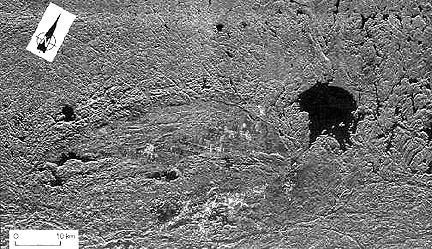Tiedosto:SIR-B Sudbury Impact Crater.jpg
Siirry navigaatioon
Siirry hakuun
SIR-B_Sudbury_Impact_Crater.jpg (432 × 249 kuvapistettä, 87 KiB, MIME-tyyppi: image/jpeg)
Tiedoston historia
Päiväystä napsauttamalla näet, millainen tiedosto oli kyseisellä hetkellä.
| Päiväys | Pienoiskuva | Koko | Käyttäjä | Kommentti | |
|---|---|---|---|---|---|
| nykyinen | 2. tammikuuta 2017 kello 22.46 |  | 432 × 249 (87 KiB) | Quibik | desaturate since it is a single-band image |
| 14. kesäkuuta 2011 kello 07.09 |  | 432 × 249 (92 KiB) | Oaktree b | {{Information |Description ={{en|1=A SIR-B radar image of southern Ontario highlights two juxtaposed but unrelated craters that are very different in age, in size, and in structural state. SIR-B radar image of the Sudbury impact structure (elliptical |
Tiedoston käyttö
Seuraava sivu käyttää tätä tiedostoa:
Tiedoston järjestelmänlaajuinen käyttö
Seuraavat muut wikit käyttävät tätä tiedostoa:
- Käyttö kohteessa bg.wikipedia.org
- Käyttö kohteessa en.wikipedia.org
- Käyttö kohteessa en.wikiversity.org
- Käyttö kohteessa fr.wikipedia.org
- Käyttö kohteessa he.wikipedia.org
- Käyttö kohteessa it.wikipedia.org
- Käyttö kohteessa ja.wikipedia.org
- Käyttö kohteessa pl.wikipedia.org
- Käyttö kohteessa ru.wikipedia.org
- Käyttö kohteessa simple.wikipedia.org
- Käyttö kohteessa zh.wikipedia.org



